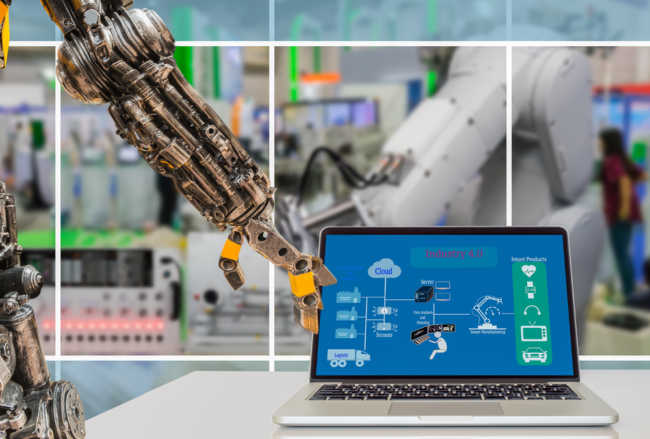Becoming the Master of your Connected Industrial Universe
The world is changing, and today’s leading industrial OEMs are developing connected products to avoid being left behind. Machine learning and artificial intelligence drive predictive maintenance and business optimization. Remote asset monitoring and management eliminate costly unscheduled downtime and boost operational efficiency. Real-time and historical visualizations create better products and services, while workflow integrations help make customer relationships more “sticky.” There is, however, a dirty secret getting lost in the excitement heralding this connected future – and why so many industrial IoT initiatives stall out. All these outcomes of digital transformation, made possible by the ever-increasing variety of services in the cloud, are dependent on the quality and capabilities of the applications running on your equipment at your customers’ facilities – at what cloud providers call “the edge.”
The Importance of the Industrial IoT Edge
For industrial OEMs this isn’t the edge at all – it’s the center of the universe, and in most cases, your gateways in the field provide the only channel for connecting your equipment to the cloud. The applications running on these gateways are wholly responsible for collecting and delivering the machine data upon which your cloud services depend for generating insights. Therefore, the quality of these applications at the edge directly impacts the quality of the data received – and the ultimate business value to be created by your applications in the cloud.
Industrial Gateway 101
At a minimum, your edge applications will need to perform two key functions. First, collect and translate raw machine data from the industrial protocols used by your equipment controllers and PLCs (Modbus, SAE J1939, Ethernet/IP, OPC-UA, etc) to a format understandable by the cloud, such as JSON. Second, you need a method for securely connecting and sharing this data to an IoT service in the cloud, frequently over a standard protocol like MQTT. The problem with this ‘direct pipeline’ is that the realities of connectivity reliability, bandwidth, and latency issues mean you’re likely to lose a lot of data as well as receive a lot of garbage at the other end. Additionally, sending every bit of data your machines produce is going to be incredibly expensive for most use cases, regardless of whether the data received can be used or not. For your IoT-enabled business model to succeed, your edge application logic is going to have to do a lot more than just translate and forward the data.
Gateway Application Requirements
Beyond the necessary protocol clients for basic translation, you’re going to want to both buffer and filter this data before sending onward. This prevents data loss during intermittent connectivity with the cloud and more importantly lets you pick and choose which data should be sent. For example, in temperature monitoring scenarios, your equipment may report to the gateway application a value every second. If your customer only requires a mobile dashboard granularity of 10 seconds, however, your application can be configured to only send every tenth reading to the cloud, reducing your bandwidth and related costs by 90%.
Adding Edge Intelligence
A slightly more complex case, continuing with the temperature monitoring scenario, is to only send data to the cloud when equipment temperature exceeds the configured set point. Your customer may not care about the slight variations of equipment under normal operations, but they do need to know right away if the temperature rises above a certain limit so they can take action before a failure occurs. In this scenario, your industrial gateway application could simply send an “OK” message to the cloud once an hour to indicate normal performance, but immediately send any reading above an expected value in order to trigger notifications and other actions, while continuing to send additional data at an assigned frequency until the situation is resolved.
Data Management at the Edge
To do any of this though requires new sets of functionality for your applications, including the ability to configure and read parameters, and a way to store incoming machine data locally on the gateway itself. As with any stored data, a secure API is recommended for controlling which users and systems may access this local historian, and what data each is allowed to read and/or write. Logic, both the ability to program routines and their methods for execution, is part of this package as well, including the capacity for making decisions without requiring connectivity to the cloud.
A Flexible Human Machine Interface (HMI)
For increasing the value your connected equipment can generate out in the field, there’s another set of functionality your gateway application should provide – the Human Machine Interface (HMI) on the asset itself. As the primary conduit of information and system configurability for the human operators where the equipment is being used, flexibility and performance for matching the conditions under which each unit is operating – oil & gas, marine environments, transportation, hospitals, etc – is tantamount.
For whom the Bell Tolls
Are you the engineering manager made responsible for developing such an application? It gets worse.
Simple is as simple does
First, the good news. Some gateway hardware vendors offer sets of tools and components for solving basic challenges “out of the box” so your team doesn’t have to build everything from scratch. For a single product line with a well-defined, consistent use case, this might be sufficient. Be aware though, hardware vendors may charge hefty fees for these software components, so be sure to validate upfront these costs won’t break your connected product business model.
Supporting Industrial IoT Connected Products And Services
It’s when you take a broader view outside of a single product line that things get a lot harder. When your P&L is active across multiple product lines or operating environments, any software provided by the gateway vendor is less likely to meet your expanded matrix of requirements and constraints. These are hardware companies after all, and most lack sophistication at this level of application development. The same gateway hardware with a one-size-fits-few toolset is unlikely to meet your different needs across all your products and customers. Each product line or use case ends up with its own unique hardware or software. Suddenly you’re faced with supporting many combinations at the same time, for a long time. There’s no platform scale, and each connected product requires someone on your team with specialized knowledge that can’t be applied to your other systems. Many connected products have expected lifetimes of at least 20 years, so each combination becomes a maintenance (and warranty) concern. As the number of combinations increase, it can become a nightmare to manage.
Breaking Up Is Hard To Do
There’s more. Some hardware vendors sell gateways that will only run their supplied application software. If this package meets your technical and business requirements for a particular product at a reasonable price, this may be fine for initial launch. If over time, however, either half of the package ceases to meet your needs – due to deteriorating vendor product quality or business relationships, product end of life decisions, or evolving requirements from you or your customers – you can find yourself starting all over again on both fronts. Not only that, you now have to come up with a migration plan for all the equipment you’ve already deployed to your customers over the past several years. This is not good.
3 Rules For Successful Industrial Gateway Development And Deployment
Fortunately, there’s an answer to this riddle and a clear path forward for industrial OEMs seeking accelerated and sustainable digital transformation. Here’s a simple set of rules for rapid and long-term connected product success.
Rule #1 – Specialize, Specialize, Specialize
Buy your gateway hardware from hardware vendors, buy your gateway application from software vendors. This separation of concerns opens the door to the best of both worlds. Each supplier provides you with only what they are best at providing. Implicit within Rule #1 is your team shouldn’t be building these components either. If it doesn’t differentiate your product in the market, it shouldn’t be coming from your internal teams. Your killer product will come from the combination of great hardware (from dedicated hardware specialists), flexible applications (from gateway software experts), and unique business value (from your team’s own domain expertise).
Rule #2 – Always Do The Right Thing
Once you’ve adopted Rule #1, buy the most appropriate gateway hardware for each specific product line and operating environment. Since you’re no longer tied to any one hardware vendor’s set of offerings, pick each gateway regardless of the vendor that’s best suited for each set of requirements and constraints in terms of cost, size, resources, certifications, and connectivity options. This rule has the added benefit of removing from the selection process any vendors who don’t let you choose the software to run on their gateways, which is better for everyone except those hardware vendors seeking to lock their customers into a closed ecosystem.
Rule #3 – Be Consistent In Your Flexibility
Choose software that runs across your range of selected gateway hardware. Your team’s ability to support all your connected products today and in the future with a common set of tools and a minimum of specialized knowledge for each connected product is a critical factor for generating new revenue through industrial IoT. This also makes developing and deploying new products a much faster, better, and cheaper endeavor, with limited porting costs across new hardware and OS flavors. Similar to your hardware evaluation, choose an established software vendor with specialized experience in delivering and supporting gateway applications used by industrial OEMs like you. Your global customers likely have requirements around how and where their data is stored in the cloud, so make sure your gateway software integrates seamlessly with SDKs and tools from any cloud provider in any location. Critically, the application should also let you include your own unique secret sauce at the edge. In short, make sure your products at the edge are as flexible and extensible as your applications in the cloud. This is how you will win.
IT + OT = IIoT
Business value in the cloud starts with your capabilities at “the edge”, a term originally used by cloud vendors and masters of IT to define the messy, physical world of OT. What industrial OEMs have known for a long time, and of what IT leaders are becoming increasingly aware, the edge is the center of your customer’s world. With industrial IoT, both IT and OT teams are working together on increasingly mandatory initiatives for delivering business outcomes through connected products. By following these guidelines for bringing together the analog and the digital, your enterprise can become the masters of your connected industrial universe.
 This article was written by Marc Phillips, the Director of Marketing at Bright Wolf, a leading IoT technology provider and system integrator helping Fortune 1000 companies design, develop, and deploy Enterprise IoT systems and connected product solutions. Originally this article was published here.
This article was written by Marc Phillips, the Director of Marketing at Bright Wolf, a leading IoT technology provider and system integrator helping Fortune 1000 companies design, develop, and deploy Enterprise IoT systems and connected product solutions. Originally this article was published here.
